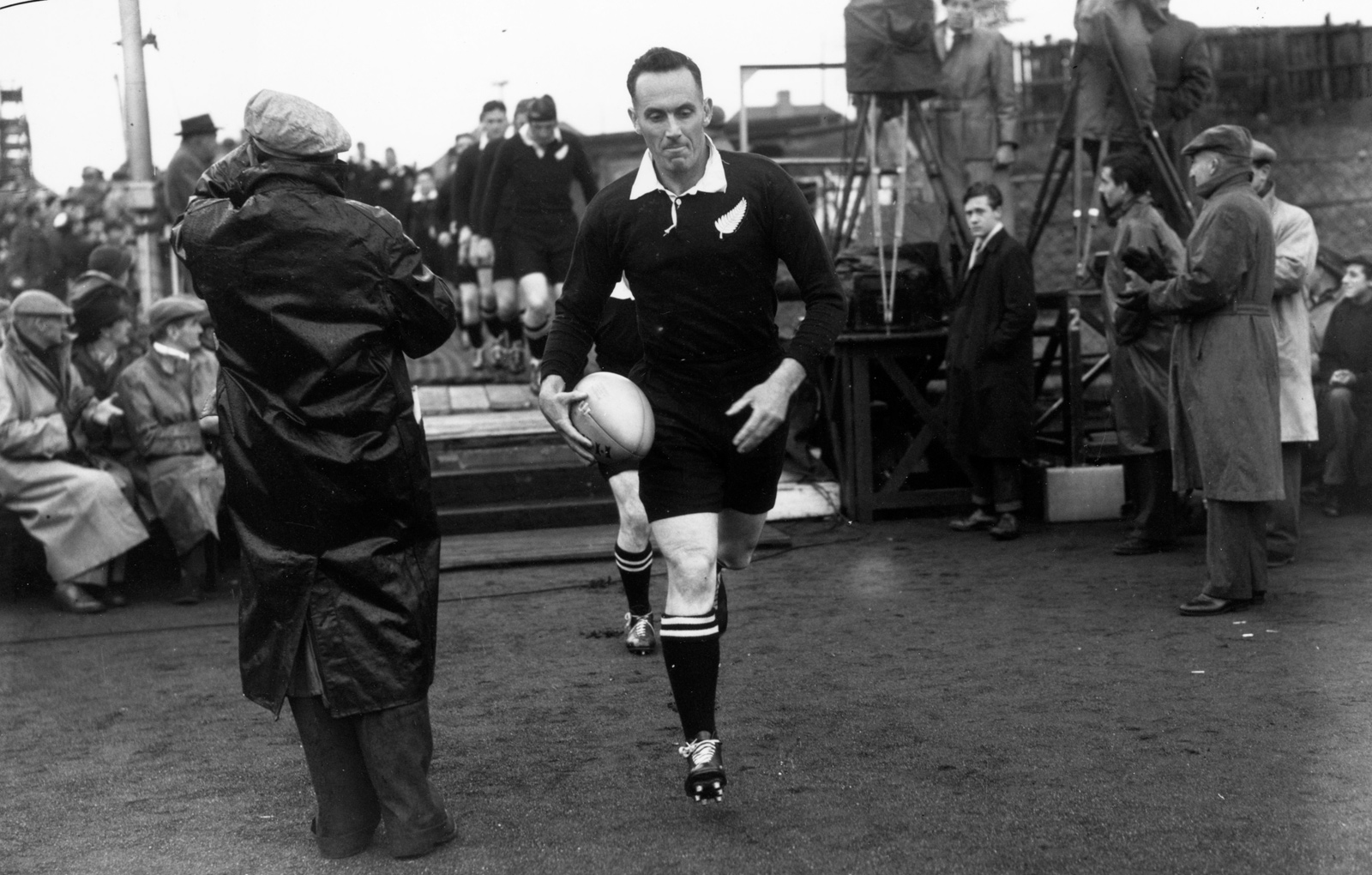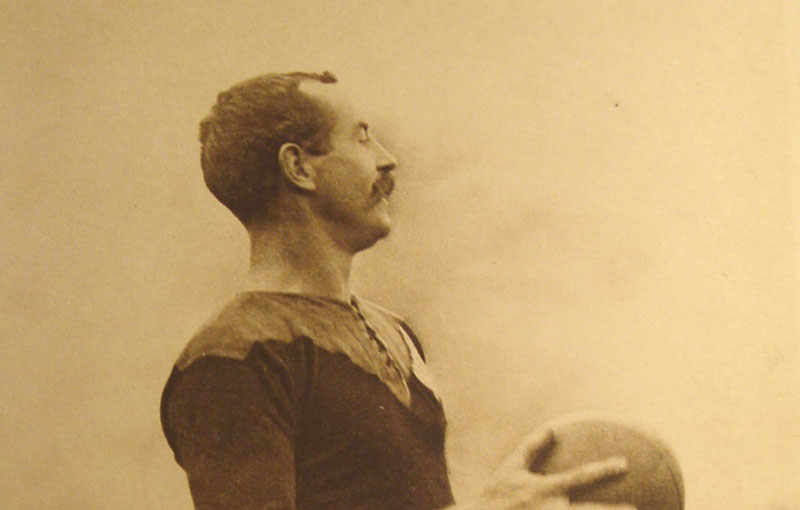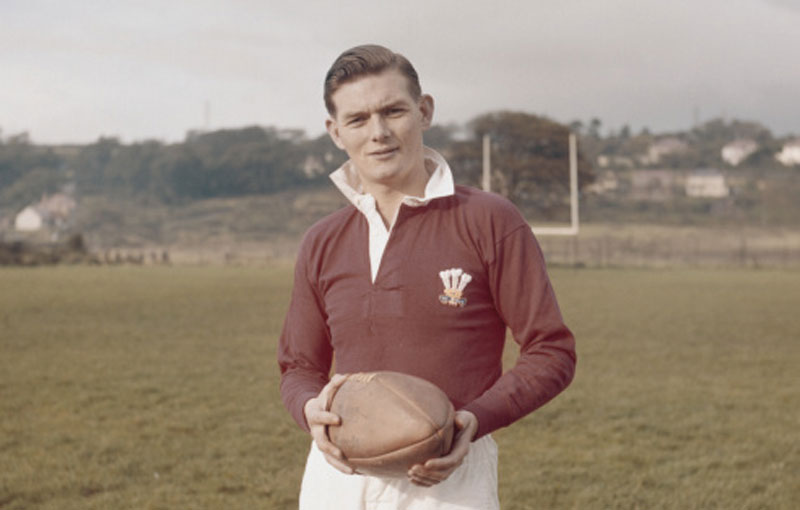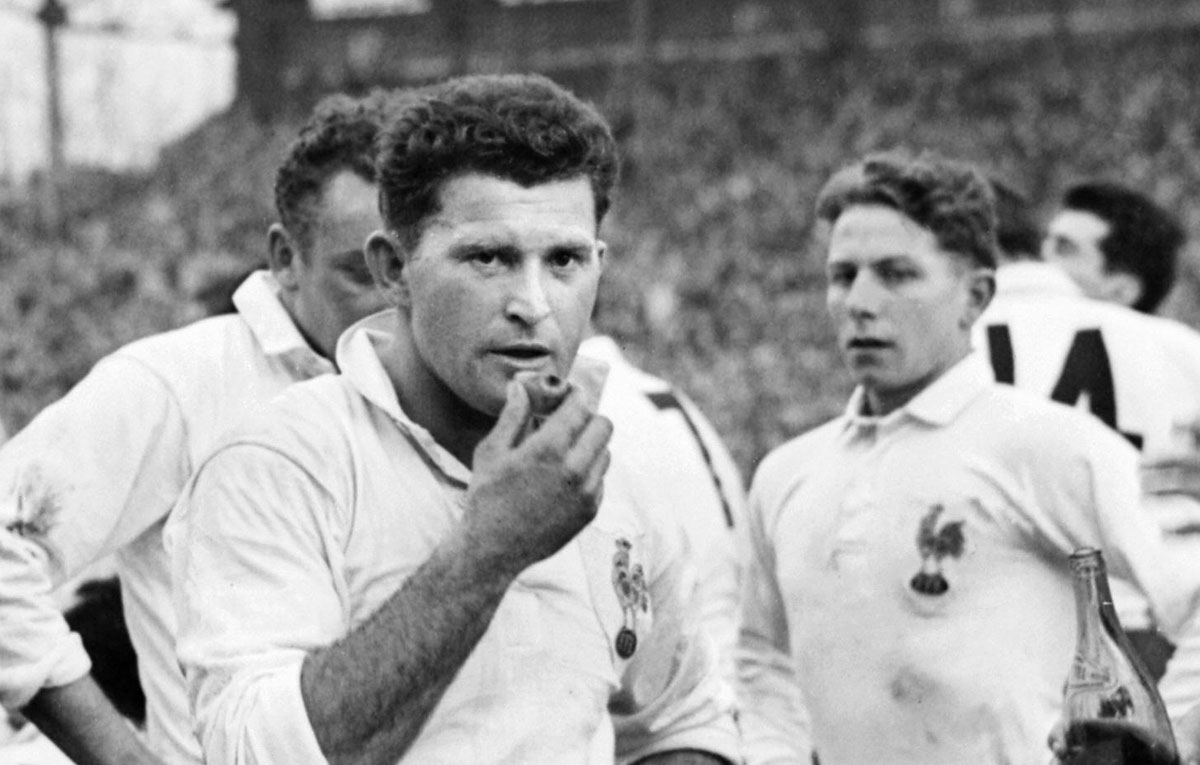The Day New Zealand Lost Twice
It seems unimaginable in the professional era that a nation would play test matches on the same day. However, in 1949 New Zealand did just that, and in doing so set a record that is unlikely to be emulated.
It seems unimaginable in the professional era that a nation would play test matches on the same day. However, in 1949 New Zealand did just that, and in doing so set a record that is unlikely to be emulated.
While the English are considered the inventors of the game, it is not they who have had the greatest influence on the sport throughout its history. That remains with two southern hemisphere powerhouses: New Zealand and South Africa. And while Australia also has a part to play in this story, it is the rivalry and history between those in black and those in green that sets the scene.
The two nations first collided on the rugby field in the Inter-Services Tournament for the King’s Cup, in the spring of 1919. In many respects, this tournament stands as the first World Cup, with teams representing not only South Africa and New Zealand, but also the home countries - notably combined as ‘Mother Country’ - as well as Australia, Canada and the RAF (who decided to compete independently of the Mother Country). No surprises as to who won the competition (New Zealand if you had any doubt).
While the two sides were certainly representatives of their nations, they were not representing their rugby unions, and so these matches will forever remain on the outside of official history. New Zealand won the fixture 14-5, but importantly, a rivalry was born.
Efforts were made to invite both the New Zealanders and Australians to tour South Africa on their way home. The Kiwi’s agreed, and a 29 man touring party arrived on the 17th July. Over the course of the tour, the New Zealanders met 15 sides and vanquished 11, though they did not play a side representing the South African Rugby Board, and it was noted that when the two national teams did meet, it would be ‘the greatest day in the history of rugby football’.
While the New Zealand players continued to impress in South Africa as they had in the King’s Cup, it was as much who wasn’t there as was that defines this period, and indeed our story.
Nathaniel Arthur Wilson, better known as ‘Ranji’, was born in Christchurch to an English Mother and a West Indian father. Despite having proven himself as one of the players of the tournament at the King’s Cup, he was not part of the team that travelled to South Africa. He was left out of the squad at the behest of the South African Rugby Board who had voted in favour to send a telegram to London suggesting that should any Māoris be selected, it could have a detrimental affect on the tour.
He was not alone in being left out, and contrary to the ethos of the rugby game, where one supports one’s fellow team mates, New Zealand pressed ahead with the tour. In doing so, they effectively relinquished the right to choose their future touring parties, and furthermore ensured that the greatest rivalry in rugby was built upon the exclusion of those whose skin was not white; something that would haunt the game for years to come.
The two nations would meet each other for the first time in 1921, when South Africa toured to Australia and New Zealand. A three match series was tied one-all when the final fixture was drawn nil-nil.
Then, in 1928, the All Blacks travelled to South Africa. New Zealand bossed the opening game, winning by seventeen points to nil, before succumbing in the second fixture seven points to six. Having won the third test eleven points to six, they were defeated at Newlands on the 1st September 1928 by thirteen points to nine. Another drawn series. The odds growing ever higher.
The two sides would not meet again until 1937, in what would become one of the most famous tours in rugby history. The Springboks arrived having beaten Australia two-nil, though they were largely expected to lose the series in New Zealand.
It is also worth noting however, that months before the South African team were to arrive, the New Zealand Rugby Union issued a statement indicating that the travelling South Africans would not play a fixture against a Māori representative side. Despite being a game played by amateurs for enjoyment, it could not escape politics.
Before the first test match came around, South Africa had amassed 110 points, and only conceded 14. Despite this, they succumbed to New Zealand in the opening test match, going down by thirteen points to seven.
From there, with never more than a handful of days between each fixture, the Springboks kept on winning. Having beaten the All Blacks in Christchurch, the series went down to the decider at Eden Park. Scoring five tries to New Zealand’s nil, South Africa clinched the series with a seventeen points to six victory; the 1937 Springboks remain the only South African side to have won a test series in New Zealand.
Advantage South Africa.
The defeat was a devastating loss to New Zealand, not least to their morale, but also to their sense of superiority. Such was their desire for redemption, a return tour to South Africa was organised for 1940.
Then, war.
It would be twelve years before they would get the opportunity to enact revenge, but in doing so, and in an act of hubris, they brought about the record on which this story is based.
In 1949, New Zealand travelled to South Africa, and again, this was a tour where the Māori players did not travel. However, in an act of both incredible confidence in their strength, as well as perhaps some guilt for the Māori players who had not travelled, the New Zealand Rugby Union also organised a test series against Australia.
Two years previously, they had beaten Australia four-nil, which might account for their confidence, but it was clear after the first test in South Africa things were not going as planned. A fifteen points to eleven defeat signalled what was to come.
Players were noted as suggesting that neutral referees would perhaps have helped keep New Zealand in each of the matches, though it was clear that South Africa certainly had the ascendancy in the scrum. Indeed, their superiority was such that Springbok coach Danie Craven offered a coaching session on scrummaging.
The second test at Ellis Park went the same way as the first, and New Zealand were standing before a mountainous task to get themselves back into the series.
And so, we come to the 3rd of September 1949.
By half time, Australia were leading by eleven points to nil, with two tries from Ralph Garner. A consolation try in the second half from New Zealand left them on the end of a bruising defeat, and with the potential loss of the Bledisloe Cup.
The other New Zealand team in South Africa fared no better, losing nine points to three, and surrendered an assailable three-nil series lead to the Springboks, as well as consigning the 1949 All Blacks to the history books as the only nation to lose two test matches on the same day.
South Africa would win the test series with a four-nil whitewash, and an Australian victory at Eden Park would signal the lowest period in the history of New Zealand rugby.

Filed under:
Historical Series, New Zealand
Written by: Edward Kerr
Follow: @edwardrkerr · @therugbymag



